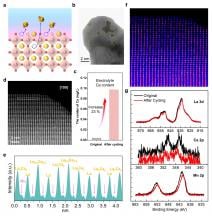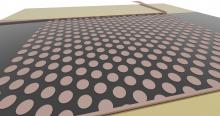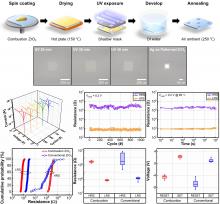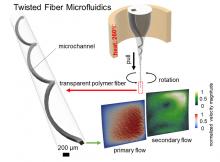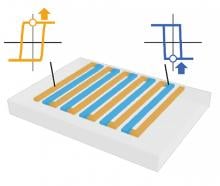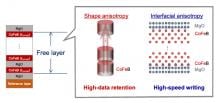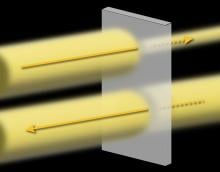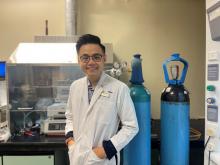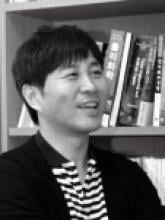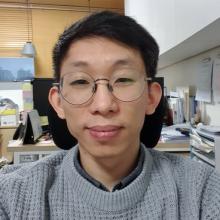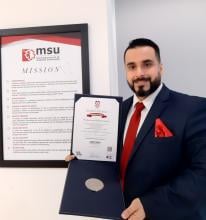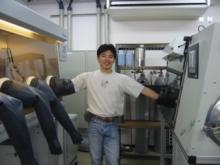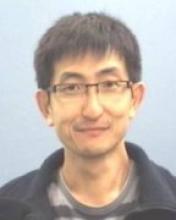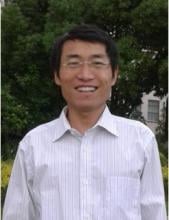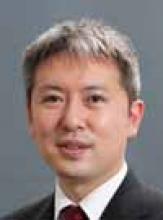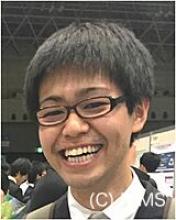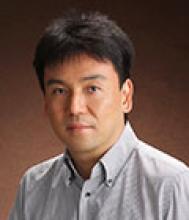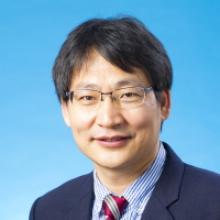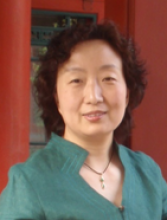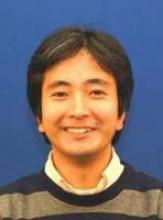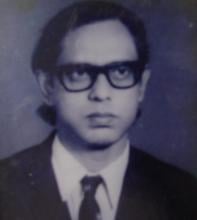Materials
News
26 Feb 2024
Analysis of materials can be done quicker and with less expertise with the help of proven machine learning techniques established in biomedical fields.
26 Feb 2024
GPT-4 shows promise as an aid to chemistry researchers, yet its limitations reveal the need for further improvements.
26 Feb 2024
Researchers have developed a proof-of-concept system that allows robotic experiments to run without any human intervention.
26 Feb 2024
Researchers have developed an AI-driven system that can design novel molecules with any desired properties and suggest methods to create them using readily available materials.
26 Feb 2024
Researchers have combined machine learning with robotic process automation to speed up and simplify a time-consuming process.
25 Feb 2024
Fibre-reinforced composites, prone to internal damage, benefit from fibre hybridisation. Using ductile fibre glass mesh (FGM) in ramie/FGM composites, this study shows improved damage resistance, load-bearing, and deformation capacity.
23 Feb 2024
Asia Research News monitors the latest research news in Asia. Some highlights that caught our attention this week are a biosensor to detect meat freshness, a cute and spooky sea creature, and how even shorter amounts of exercise can lead to benefits.
23 Feb 2024
A new technique allows researchers to map how the cellular “skeleton” adapts to external stress.
21 Feb 2024
Metal-nitrogen-carbon (M-N-C) single-atom catalysts are a promising type of catalyst that could help provide cost-effective alternatives to platinum-based ones. However, there are still some aspects of their behavior that are misunderstood. To rectify this, a group of researchers delved into the intricacies of M-N-C catalysts, yielding promising results.
15 Feb 2024
Coordination polymer crystals show promise as a new generation of light sources for industry and medicine.
15 Feb 2024
A new method allows scientists to gather enough information about the properties of metals to enable the prediction of the properties of new materials.
15 Feb 2024
Vaccines and therapies based on messenger RNA could be more readily delivered due to a non-toxic polymer that protects RNA and controls its release inside cells.
13 Feb 2024
AI records rare bird footage, Lighting up IoT and smart cities, Crystal language designs new materials, Detecting toxins with mobile phones, and Dragonfly wings for better aerodynamics. Plus join us for SciCom coffee. Read all in the latest Editor's Choice.
08 Feb 2024
Perovskite oxides have been touted as an alternative to noble metal catalysts. However, their application is still hampered by their poor electrical conductivity and low specific surface area. Now, a research team has created a new method that improves this, facilitating their application in hydrogen fuel cells.
08 Feb 2024
A trained AI system learns to design cellular materials with specific target properties for a wide range of potential uses, including tissue engineering and energy storage.
08 Feb 2024
A new coating for tiny vaccine carriers allows vaccines to remain in the body for longer.
05 Feb 2024
A key innovation in photonic (light-driven) microelectromechanical components could transform computing technology, increasing efficiency while reducing power consumption and chip size.
02 Feb 2024
Asia Research News monitors the latest research news in Asia. Some highlights that caught our attention this week are how exercising to music can help cognitive function, a material inspired by a mythological creature, and choking cancer cells using calcium.
01 Feb 2024
A collaborative group of researchers has potentially developed a means of controlling spin waves by creating a hexagonal pattern of copper disks on a magnetic insulator. The breakthrough is expected to lead to greater efficiency and miniaturization of communication devices in fields such as artificial intelligence and automation technology.
31 Jan 2024
Carbon nanostructures could become easier to design and synthesize thanks to a machine learning method that predicts how they grow on metal surfaces. The new approach, developed by researchers at Japan’s Tohoku University and China’s Shanghai Jiao Tong University, will make it easier to exploit the unique chemical versatility of carbon nanotechnology.
26 Jan 2024
Asia Research News monitors the latest research news in Asia. Some highlights that caught our attention this week are a closer step towards artificial spider silk, rocks made from plastic, and why a flightless dinosaur developed small wings.
26 Jan 2024
- Professor Kwon Hyuk-jun’s research team at DGIST develops a low-temperature solution process through exothermic response-induced combustion synthesis and implements synapse-simulating non-volatile semiconductor memory
- It is expected to be applied to next-generation computing systems because of its superb durability and data storage capabilities even in high temperature
26 Jan 2024
- DGIST Prof. Park Jin-hee and her team detected unknown sample components by analyzing color change patterns and developed a technology that allows analyzing concentrated amounts through a mobile phone camera
- Expected to secure source technologies and open new avenues in the environmental sensor field
26 Jan 2024
A team of researchers have opened new possibilities in bioanalytical application by developing a microfluidic device that allows for the precise and efficient manipulation of fluids in three-dimensional microscale environments.
23 Jan 2024
Scientists are eager to harness the unique electrical properties of topological magnets for advancing thermoelectric materials. A collaborative research group has successfully induced positive and negative polarities, unlocking the potential for generating thermoelectric energy from materials with topological magnet properties.
19 Jan 2024
Asia Research News monitors the latest research news in Asia. Some highlights that caught our attention this week are watching plants warn each other of danger, how even “harmless” addictions can have a serious side effects, and how to clear roads and railways faster using gold nanorods.
18 Jan 2024
Researchers at Tohoku University have developed guidelines for a single-nanometer magnetic tunnel junction (MTJ), allowing for performance tailoring to meet the requirements of diverse applications, ranging from AI/IoT to automobiles and space technologies.
18 Jan 2024
A research group led by Osaka Metropolitan University has discovered significant nonreciprocal optical absorption of LiNiPO4, referred to as the optical diode effect, in which divalent nickel (Ni2+) ions are responsible for magnetism, by passing light at shortwave infrared wavelengths used in optical communications. Furthermore, they have uncovered that it is possible to switch the optical diode effect by applying a magnetic field. This is a step forward in the development of an innovative optical isolator that is more compact and can control light propagation, replacing the conventional optical isolators with complex structures
15 Jan 2024
Research by Assistant Professor Edison Ang Huixiang and his team from National Institute of Education/Nanyang Technological University Singapore
Events
Sorry, no events coming up for this topic.
Researchers
Nanyang Technological University
Dr. Arun works as a Research Assistant Professor (RAP) at the Rolls-Royce@NTU Corporate Lab, Nanyang Technological University, Singapore. Through cutting-edge technology development and commercialization, he contributes to the Singapore 2030 Advanced Manufacturing Hub (AMH) and Jurong Innovation District (JID) initiatives. He also acts as an IPT-Lead of the Manufacturing Technologies programme at Rolls-Royce@NTU and leads several projects, researchers, and students.
Prasanna Lakmal is a lecturer at the Department for Commerce & Financial Management of the University of Kelaniya, Sri Lanka.
Prof. Jooyong Kim's research interest includes the development of smart fashion products based on electronic textiles.
Dr. Chi Cuong Vu is currently a research assistant at Soongsil University, Seoul, South Korea where he focuses on developing flexible wearable sensors and their applications in human activity monitoring or personal healthcare.
Dr. Eng. Hafsa Jamshaid C Text FTI is working as Associate Professor at National Textile University. She is an experienced textile professional in the field of weaving, knitting technologies for technical fabrics and composites.
Dr. Mohammed N. Abdulrazaq is currently an Assoc. Prof. at Department of Engineering & Technology, Management & Science University (MSU), Malaysia.
National Institute for Materials Science (NIMS)
Ken-ichi Uchida is a group leader in the Spin Caloritronics Group, Research Center for Magnetic and Spintronic Materials under the National Institute for Materials Science (NIMS), Japan
National Institute for Materials Science (NIMS)
Satoshi Ishii is a principal researcher at International Center for Materials Nanoarchitectonics (MANA), National Institute for Materials Science (NIMS), Japan. He also holds an adjunct associate professorship at University of Tsukuba.
Universiti Malaysia Sabah
Dr. Connie Cassy Ompok is an early childhood education expert and a Senior Lecturer at the Faculty of Psychology and Education, Universiti Malaysia Sabah. She Started her career in Early Childhood Education as a preschool teacher (2004-2007), a lecturer in early childhood education at the Malaysian Institute of Teacher Education (2008-2016) before serving as a Senior Lecturer in Early Childhood Education at UMS (2016 until now).
Universiti Teknologi MARA (UiTM)
Senior lecturer at School of Chemical Engineering, Universiti Teknologi MARA, Cawangan Pulau Pinang, Malaysia. He is also Head of Lab EMZI-UiTM Nanoparticles Colloids
Rabin Mahat is a result-oriented and multifaceted doctoral student in Experimental Condensed Matter Physics at The University of Alabama, USA. He is currently working under the guidance of Dr. Patrick LeClair, and Dr. Arunava Gupta. He received M.Sc. in Physics in 2013 from Tribhuvan University, Nepal. He also received his second M.Sc. in experimental Condensed Matter Physics from the University of Alabama in 2019. Rabin's main research is focused on the discovery of novel half-metallic Heusler compounds for potential spintronics device applications. He excels academic and professional expertise in process engineering, research procedures and material science.
Institute for Integrated Cell-Material Sciences (iCeMS) at Kyoto University
Hiroshi Kageyama is a professor in the Institute for Integrated Cell-Material Sciences (iCeMS), Kyoto University, Japan.
Newcastle University in Singapore
I am the Director of Research and Associate Professor (Reader in Mechanics of Composite Materials) at the Newcastle University in Singapore.
Fei Zhuge is a professor at Ningbo Institute of Materials Technology and Engineering (NIMTE), Chinese Academy of Sciences (CAS).
Daegu Gyeongbuk Institute of Science and Technology (DGIST)
Koteeswara Reddy Nandanapalli is a researcher in the Bio-Harmonized Device Lab at the Department of Emerging Material Science, Daegu Gyeongbuk Institute of Science & Technology (DGIST), South Korea.
Daegu Gyeongbuk Institute of Science and Technology (DGIST)
Sungwon Lee is a materials scientist and leads the Bio-Harmonized Device Lab at the Department of Emerging Material Science, Daegu Gyeongbuk Institute of Science & Technology (DGIST), South Korea.
Assoc Prof Yuki Nagao is a materials scientist at the School of Materials Science, Japan Advanced Institute of Science and Technology.
National Institute for Materials Science (NIMS)
Dr Ryota Tamate is a materials scientist at the Center for Green Research on Energy and Environmental Materials, National Institute for Materials Science, Japan.
Nagoya University
Yukikazu Takeoka is a materials engineer at the Department of Molecular Design & Engineering at Nagoya University, Japan.
Dr Ye Zhou is an electronic engineer at the Institute for Advanced Study, Shenzhen University, China.
City University of Hong Kong (CityU)
Zuankai Wang is currently a Professor in the Department of Mechanical Engineering and Associate Dean (Internationalization & Industry Engagement) of College of Engineering at City University of Hong Kong.
Dr. KeweiGao is the Professor of Materials Physics, and the Associate Chair of the Department of Materials Physics and Chemistry at University of Science and Technology Beijing (USTB).
Roland Hany is a Group Leader at Empa, Swiss Federal Laboratories for Materials Science and Technology.
Atsufumi Hirohata is a professor at the Center for Science and Innovation in Spintronics in Tohoku University, Sendai, Japan , and has over 25 years of experience in spintronics, ranging from magnetic-domain imaging to spin-current interference.
A Tenured Professor at the Institute of Space Technology (Pakistan), Dr. Shabbir is working on Polymer based Nanomaterials for water treatment, food safety, nano-drug delivery systems, solar cells and carbon dioxide capture.
Biomaterials Scientist working on surface engineering of medical implants used for the replacement of hip knee, cardiac and dental .
Assoc Prof Yang and her research team from SUTD conducts research into water desalination as well as energy storage simultaneously. She developed a low dimensional nanomaterial to desalinate ocean water using a process of hybrid capacitive deionization. This process, allows for the processing of desalinated water more efficiently while also providing low-cost energy storage.
For 20 years, I have been engaged in research in the development of compositions and study of the properties of heterocomposite polymer materials used in mechanical engineering. Currently, a performer in the applied joint Uzbek-Indian project “Improving the mechanical and tribological properties of polymer composite”.
Dr Teng Yin Ting is a Lecturer in Republic Polytechnic, Singapore, with more than 10 years of research experience in chemical additives, nanomaterials, battery materials and energy harvesting materials.
Nanyang Technological University
As Industry 4.0 is developing, sustainability and durability have to be established. I lead a multidisciplinary team of researchers that explore natural materials, bioinspired concepts, microstructural engineering and 3D printing to develop multifunctional durable structures. These materials can be 3D printed, are generally light weight, hard, and comprise various functionalities like stimuli responsiveness or resistance to extreme environments.
Giants in history
Abdus Suttar Khan (c. 1941 – 31 January 2008) was a Bangladeshi engineer who spent a significant part of his career conducting aerospace research with NASA, United Technology and Alstom.
Lin Lanying (7 February 1918 – 4 March 2003) was a Chinese material engineer remembered for her contributions to the field of semiconductor and aerospace materials. Lanying was born into a family who did not believe in educating girls and she was not allowed to go to school.
















